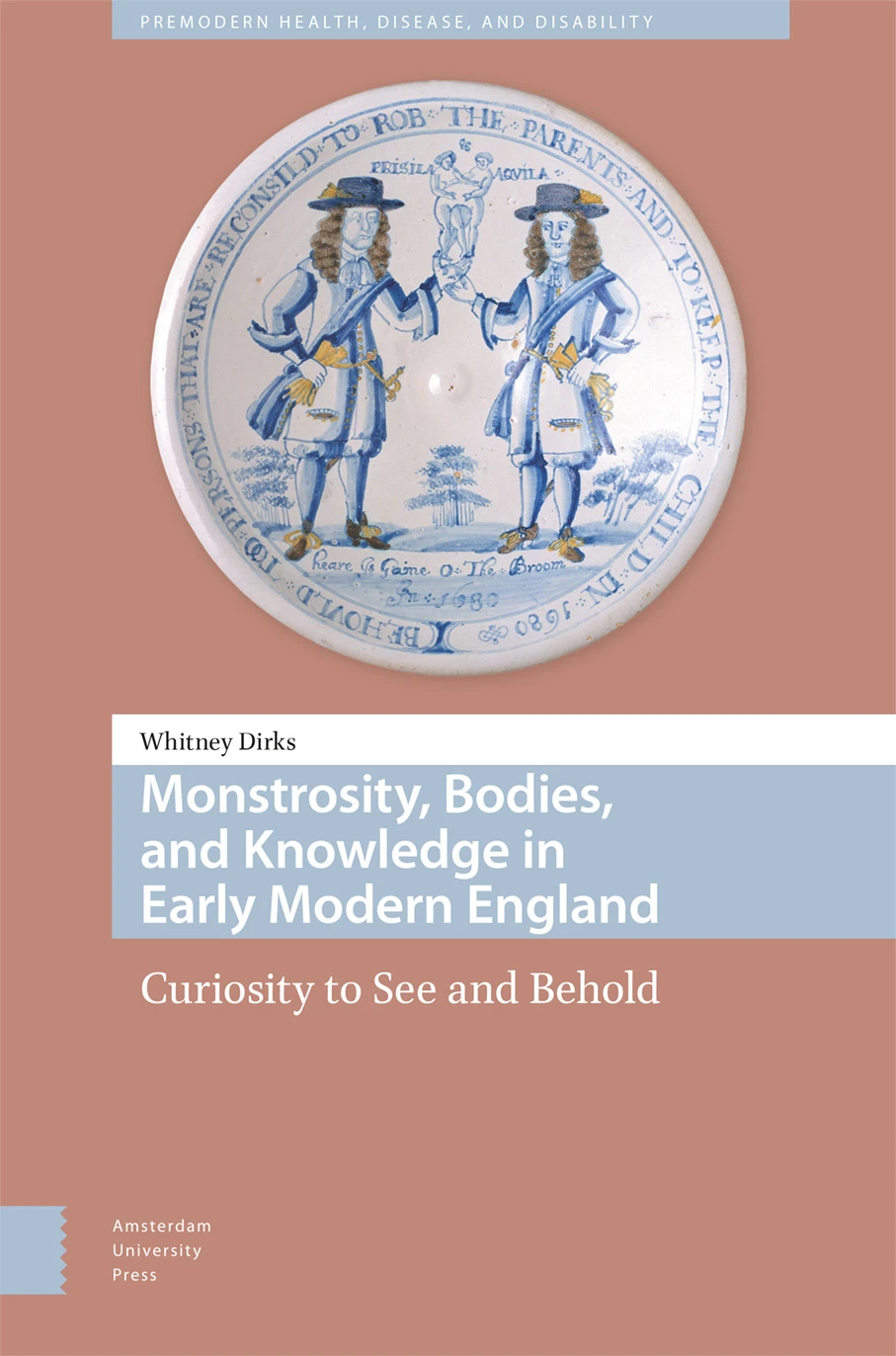
Author: Whitney Dirks (Gustavus Adolphus College)
Publisher: Amsterdam University Press, 2024
In 1680, the poor cottager Mary Herring gave birth to conjoined twins. At two weeks of age, they were kidnapped to be shown for money, and their deaths shortly thereafter gave rise to a four-year legal battle over ownership and income. The Herring twins’ microhistory weaves throughout this book, as the chapter structure alternates between the family’s ordeal and the broader cultural context of how so-called ‘monstrous births’ (a contemporary term for deformed humans and animals) were discussed in cheap print, exhibited in London’s pubs and coffeehouses, examined by the Royal Society, portrayed in visual culture, and litigated in London’s legal courts. This book ties together social and medical history, Disability Studies, and Monster Studies to argue that people discussed unusual bodies in early modern England because they provided newsworthy entertainment, revealed the will of God, and demonstrated the internal workings of Nature.
Contents
Acknowledgments
Dedication
Conventions and Abbreviations
Preface: A Note about Form
Étude 1: An Anomalous Birth
Chapter 1: Introduction: Monstrosity, Disability, and Knowledge
Étude 2: A Newsworthy Event
Chapter 2: Monstrous Print
Étude 3: A Popular Attraction
Chapter 3: Monstrous Shows
Étude 4: The Expert Visitor
Chapter 4: The Royal Society
Étude 5: A Decorative Commodity
Chapter 5: Visual Culture
Étude 6: The Lawsuit
Chapter 6: Conclusion: Autonomy, Agency, and Unfree Labour
Bibliographical Abbreviations
Primary Sources: Archival
Primary Sources: Printed, Visual, Material, Modern Editions
Secondary Sources
Source: https://www.aup.nl/en/book/9789462986671/monstrosity-bodies-and-knowledge-in-early-modern-england